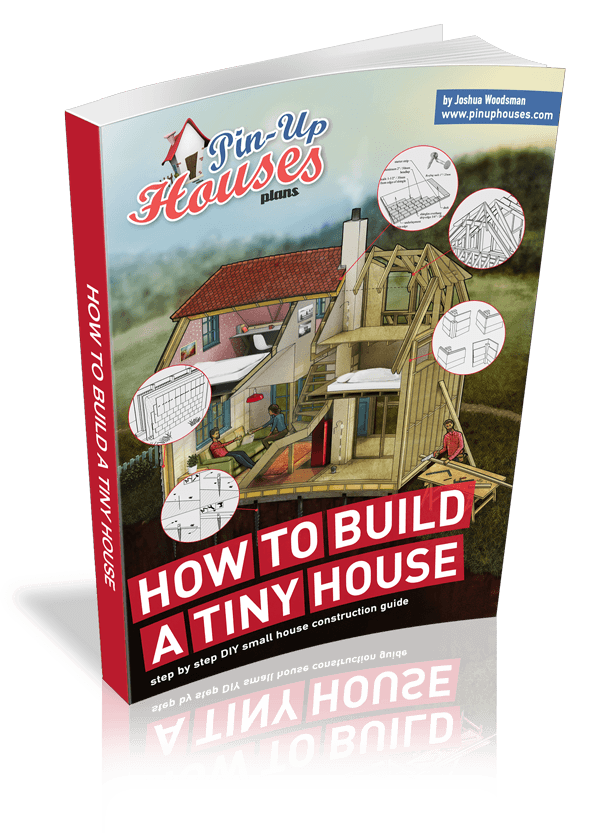
Living in a tiny home comes with a lot of perks. It generally lowers clutter, cleaning time, monthly bills, and carbon footprint. However, while it offers a simplified high-quality lifestyle in many respects, the indoor air quality in a small house can be significantly reduced as well.
Several daily activities performed in a small space can lead to a dangerous microclimate, resulting in adverse health issues from minor to more serious. Take residual carbon monoxide from unvented gas appliances as an example. In addition, even breathing and indoor plants that are supposed to be expected and beneficial can produce excess moisture that can give rise to mildew and mold growth.
The good news is that you can eliminate these air pollutants in your tiny house. What’s more, if you’re on a tight budget or sensitive to chemicals, there are natural ways to improve the air quality in a tiny home. Here are chemical-free ways to clean the air inside your house.
1. Place Indoor House Plants
Put spruce in your interior with houseplants. Not only can they improve your house look, but they also purify your air quality. Apart from that, here’s a list of indoor plants and the benefits you can get from them:
- Aloe Vera – purifies the air of formaldehyde (glue, permanent press fabrics) and benzene (paints, detergents, furniture wax)
- Barberton Daisy – cleanses formaldehyde, benzene, and trichloroethylene (household hard surface and upholstery cleaners)
- Broad Lady Palm – reduces ammonia yet is quite expensive
- Chinese Evergreen – cleans formaldehyde and benzene
- Chrysanthemum – filters toxins including ammonia and benzene
- English Ivy – reduces airborne fecal particles
- Snake Plant – reduces benzene, formaldehyde, carbon monoxide (clothes dryers, heater, gas stoves, ovens), and xylene (rust preventatives)
- Spider Plant – an animal-friendly plant that battles carbon monoxide and xylene
- Weeping Fig – reduces formaldehyde, xylene, and toluene (disinfectants, adhesives)
Some indoor plants can serve as dehumidifiers too. They harvest moisture from the air through their leaves, which can help manage the humidity level in the air of a tiny house. These plants are English Ivy, Parlor Palm, Boston Fern, or Tillandsia.

2. Use Essential Oil Diffusers
Many essential oils have antibacterial properties. Not only are they applied to your skin topically as a treatment for grazes, scrapes, and other minor wounds, but they’re also added to DIY household cleaners. They can prevent dust mites, as well as reduce airborne bacteria. Opt for tea tree oil, rosemary, clove, and eucalyptus for better results.
3. Cook with Extra Virgin Olive Oil
Your entire house has probably always been filled with a lingering smell of burnt oil when using avocado, canola, corn, peanut, safflower, and sunflower oil. It’s because they have a higher smoke point. Instead, use oil with a lower smoke point-like, light olive oil (not extra virgin oil), and your kitchen wouldn’t be filled with smoke anymore.
4. Light Pure Beeswax Candles
Particles float in the air because they’re positively charged ions. However, when out in nature, these positive particles will not float. This is because nature releases negative ions that bind to the positive ones, making them heavier and eventually falling to the ground. When these particles fall, the air will be cleaner.
This can’t happen inside your house unless your house is out in the woods. But here’s the catch. Pure beeswax candles can make this phenomenon indoors artificially. Lit these candles inside your house, and eventually, your house air would be cleansed. Plus, these candles emit almost no smoke, making them the best option for people with allergies and asthma.
5. Opt for Natural Mold and Mildew Killers
Any fungi, which are byproducts of a humid environment, release spores in the air that could set off allergy symptoms. Borax and bleach can wipe them out. But you can get rid of them without harming your furniture, especially your pre-assembled kitchen cabinets, or even yourself, your family, pets, and the environment. Use home ingredients like vinegar, tea tree oil solution, citrus seed extract mixture, hydrogen peroxide, and baking soda to do so.
6. Go for Fragrance-free and Non-aerosol Products
Fragrances from cleaning products may surely add a pleasing odor to your house, but they could also negatively affect any person with allergies and asthma. The same goes for aerosol sprays, like air fresheners or hair and body sprays.
These products let out harmful chemicals into the air. If you want to clean and add fragrance to your house, using natural ingredients is best. For instance, you can make a mixture of lemon, baking soda, and rosemary.
7. Groom Your Pets
Dander, your pets’ skin cells, is found to develop asthma-like symptoms or even worsen your existing asthma. To avoid this, regularly groom your pets and brush them outdoors. Also, don’t forget to vacuum the areas where your pets stay. It’s best to use those tools with a HEPA filter.
Takeaway
Whether you’re indoors or outdoors, the quality of the air you breathe still has a significant impact on your health. Hence, it’s crucial to improve the air quality in your house, whether it’s big or small. If you have to clean dusty areas like your garage and you’re asthmatic or allergic to grime, always seek professional help.









